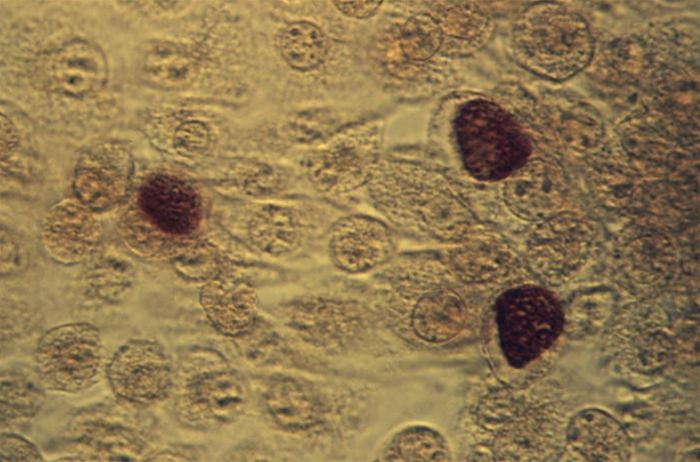Facts About Chlamydia
- Chlamydia is the most common sexually transmitted bacterial infection in South Africa
- The infection is asymptomatic in about half of men and 3/4 of women
- Symptoms are mostly clear vaginal discharge and burning during urination
- The infection can progress to pelvic inflammatory disease or epididymitis
- The infection with antibiotics removed
What is chlamydia infection?

Chlamydia is an infection of the urethra, cervix or rectum caused by the bacterium Chlamydia trachomatis . The infection provides no symptoms in half of the cases of men and 3/4 of cases for women.
It is recommended that all sexually active people under 25 should be examined for chlamydia by frequently changing sexual partner.
How common is chlamydia infection?
Chlamydia is the most common sexually transmitted disease in South Africa. Every year it diagnosed in nearly 30,000 people. Highest incidence of chlamydia in women and men under 25 years.
Only a third of those who opt for testing are men. We therefore assume that some men walking around with chlamydia without being aware of it.
What causes chlamydia infection?
The infection is transmitted through sexual contact with another person. Since chlamydia infection usually does not cause symptoms, the infection may have occurred earlier than when one becomes aware of the infection.
The bacterium is transmitted between people who have unprotected sex. It infects the lining of the urethra in women and men and the cervix in women and in the rectum after anal sex.
The bacteria can spread from the urethra to the epididymis, or from the cervix to the uterus and fallopian tubes.
In rare cases, chlamydia cause an allergic inflammation of the eyes and joints.
What are the symptoms of chlamydia infection?
- The most common symptoms are pain during urination and discharge from the urethra and for women also from the cervix
- Men may have itching in the urethra
- Women can stain soft or soft during intercourse
- The condition can also cause abdominal pain and fever
- In rare cases, you can also get temporary joint pain
- Men can get epididymitis.
What symptoms should pay particular attention to?
Vaginal discharge, burning or itching in the urethra, spotting in women.
Often give chlamydia infection have no symptoms.
How is it diagnosed?
On suspicion of chlamydia recommended a pelvic examination in women. There be a bacterial sample with the test stick from the urethra and the cervix in women or the urethra (the graft investigation or urine test) in men.
When should you take the test?
Because many do not have symptoms, it is recommended to take samples in the following situations:
- Before abortion
- Before setting up the spiral
- In young women with frequently changing sexual partners
- In young women with increased vaginal discharge
- In pregnant women under 25
- In younger women with symptoms of pelvic inflammatory disease
- By spotting or other bleeding problems (also in COC users)
Do-it-yourself test issued by a doctor or in hospital
It is now possible to detect chlamydia in a urine sample – with equally high degree of reliability as with other types of samples.
There must have gone at least two hours since last urination.
10-15 ml of the first portion of the urine collected in a clean test tube.
The sample is sent into the microbiology department at the nearest hospital.
In women, a urine sample is not sufficient, but must be supplemented by study from the cervix / vagina, which is performed at the doctor.
What treatment is there?
Antibiotics kill bacteria, and azithromycin is the drug recommended. It is enough with one day of treatment. You should not have sexual intercourse the first two weeks after treatment.
- Use of a condom prevents infection
- Your sexual partners should be informed that they may be infected
Control of treatment?
It is not recommended to be routinely taken control sample after treatment. For prolonged genes after treatment, it may be checked. Pregnant women are also recommended control after the completion of treatment. If the control sample taken, it should not be before four weeks after treatment has ended.
How is long-term prospects?
The disease can be present even if you do not have symptoms. It takes from 5-21 days after you are infected until you may develop symptoms. If you go with the disease without being treated, it is assumed that most will be healed by themselves after 1-2 years.
Almost all are cured after a of antibiotics. Failure or late treatment of women can develop inflammation of the fallopian tubes. This can lead to sterility. Since it is normal not to have genes for this disorder, it is natural that there are many who have had the disease for a long time when they seek medical attention. Recent statistics suggest that sterility occurs in less than 5% of all persons who with untreated infection.
Inflammation of the scarring of the fallopian tubes increase the risk for later ectopic pregnancy. In recent years, many researchers have questioned whether chlamydia is so important for pelvic infections, infertility and pregnancy outside the womb as previously thought.
The infection can be transmitted to the baby during birth and cause conjunctivitis or pneumoniaBut does not give dangerous birth defects.
In the absence of treatment in men chlamydia may lead to inflammation of the epididymis.
How do I avoid or aggravate chlamydia infection?
Condoms protect against chlamydia. It is very important with contact tracing. It is especially important to tell your partner that you are infected. That way, your partner can also be examined and treated.
